Abstract
Past studies have shown that stuttering is eliminated when speech is synchronized with a metronomic beat, but the speech sounds artificial. The present study investigated the effect of increasing the duration of these individual stimulus beats with the stimulus-off period constant at 1 sec. When subjects were instructed to speak during the stimulus-on period, stuttering was an inverse function of stimulus duration, indicating that the known metronome effect on stuttering is one point on a continuum of effective rhythm procedures. The “naturalness” of speech increased as the stimulus duration increased up to durations of about 2 sec, and then decreased. At optimal values, stuttering was greatly reduced and naturalness and rapidity of speech were retained. These optimal values effectively controlled stuttering in a field test that used two types of specially designed portable instruments, one of which produced a tactual stimulus and the other an auditory stimulus.
Full text
PDF
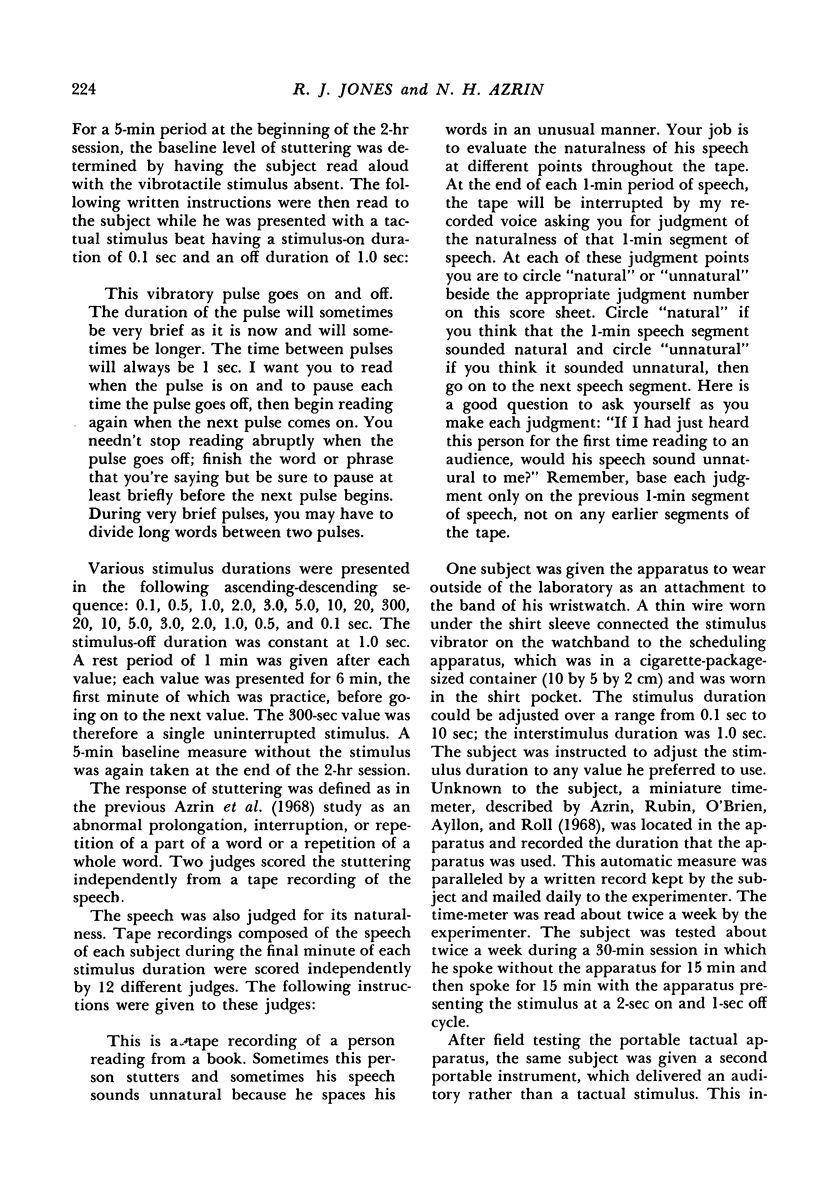
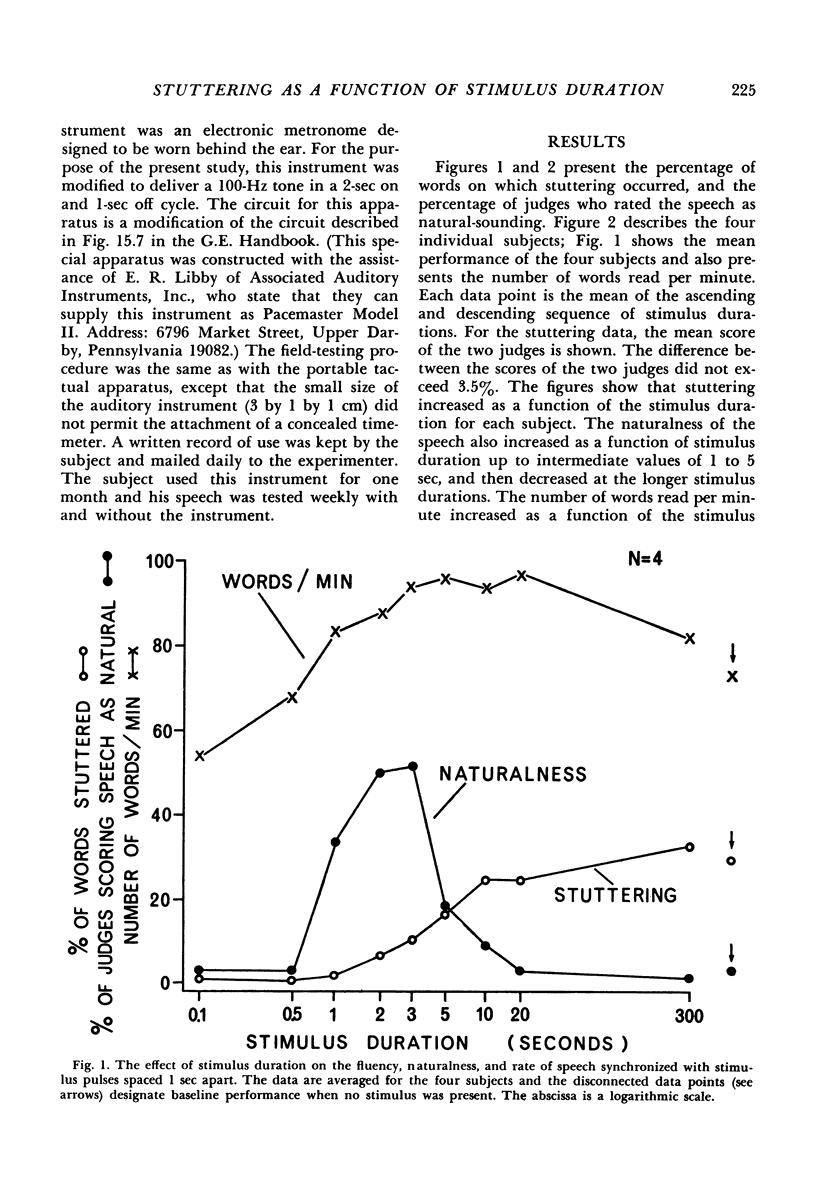
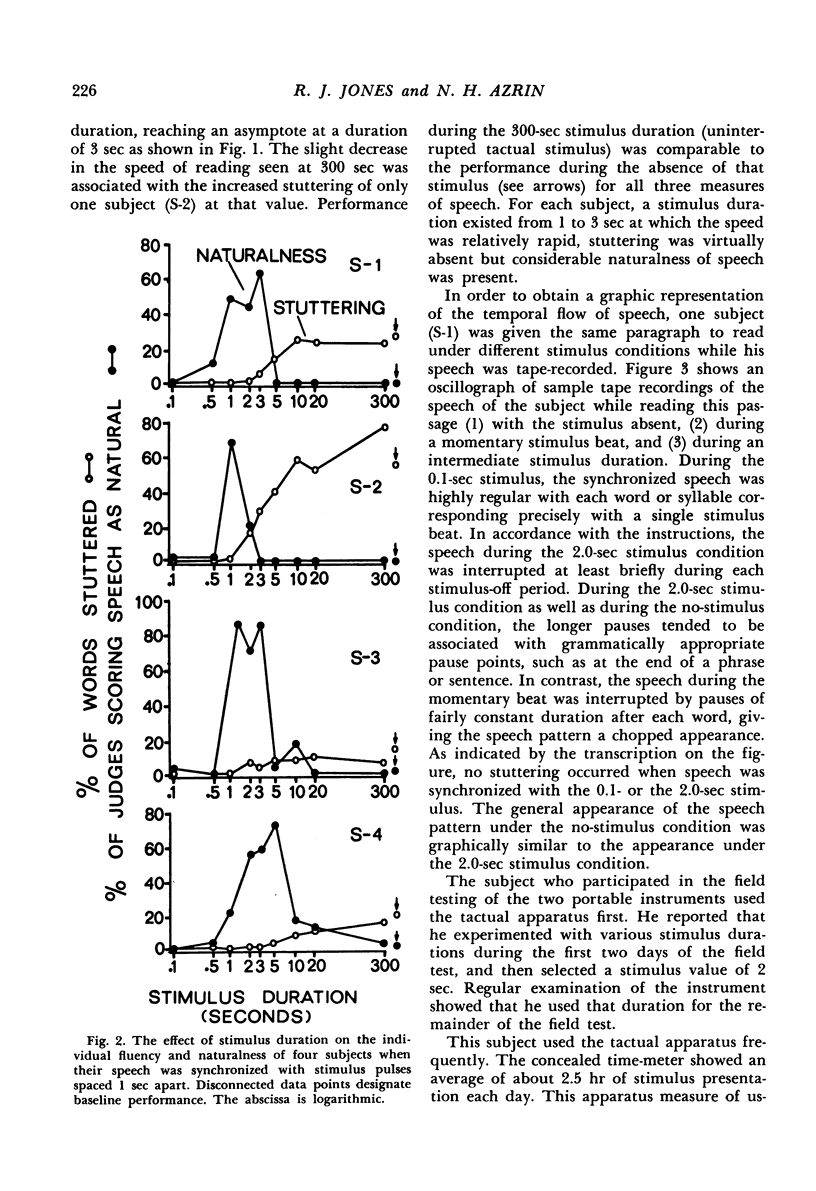
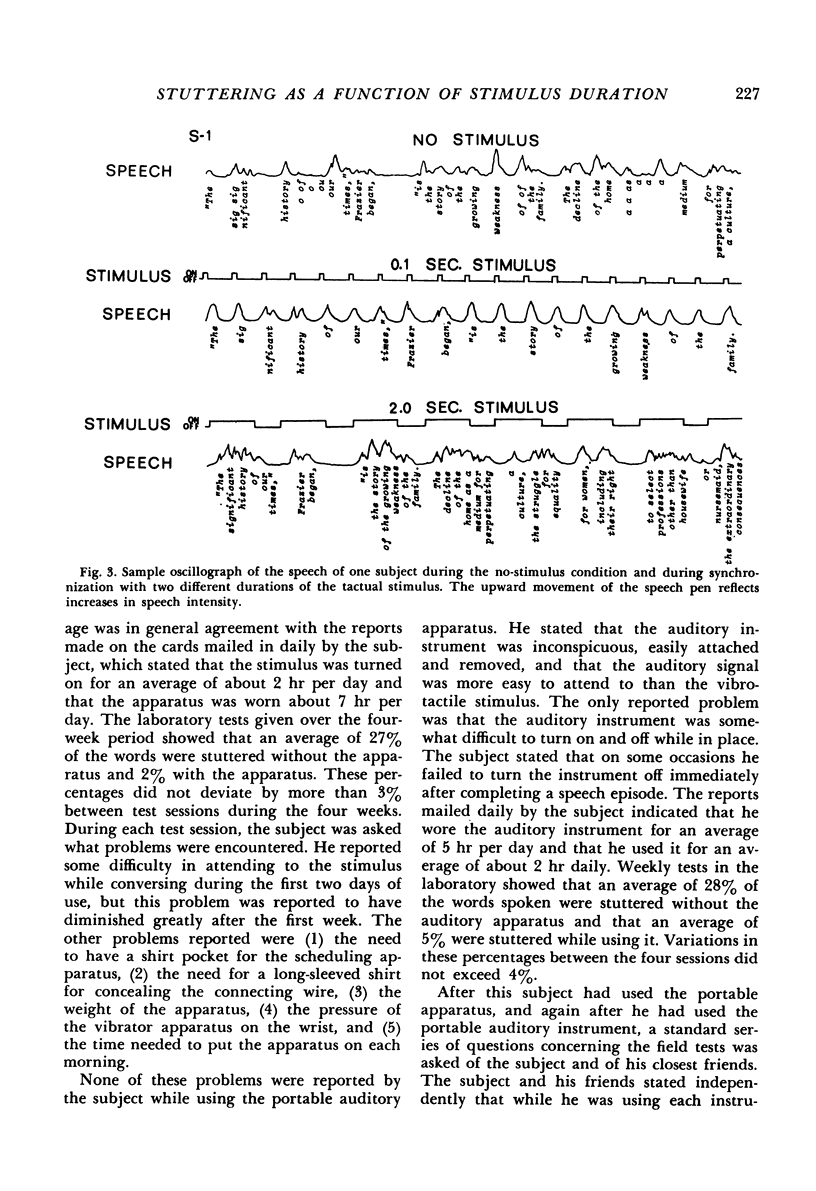
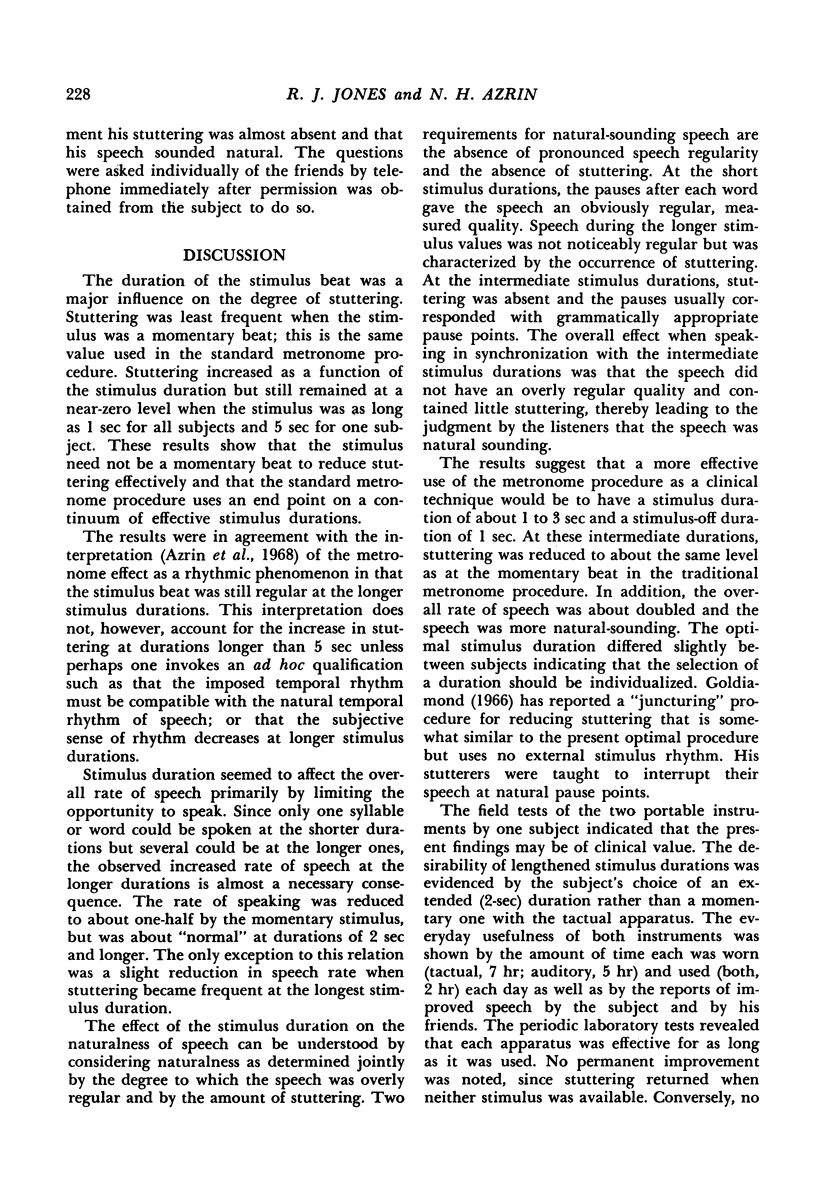

Selected References
These references are in PubMed. This may not be the complete list of references from this article.
- Azrin N., Jones R. J., Flye B. A synchronization effect and its application to stuttering by a portable apparatus. J Appl Behav Anal. 1968 Winter;1(4):283–295. doi: 10.1901/jaba.1968.1-283. [DOI] [PMC free article] [PubMed] [Google Scholar]
- Azrin N., Rubin H., O'brien F., Ayllon T., Roll D. Behavioral engineering: postural control by a portable operant apparatus. J Appl Behav Anal. 1968 Summer;1(2):99–108. doi: 10.1901/jaba.1968.1-99. [DOI] [PMC free article] [PubMed] [Google Scholar]
- Brady J. P. Studies on the metronome effect on stuttering. Behav Res Ther. 1969 May;7(2):197–204. doi: 10.1016/0005-7967(69)90033-3. [DOI] [PubMed] [Google Scholar]
- Fransella F., Beech H. R. An experimental analysis of the effect of rhythm on the speech of stutterers. Behav Res Ther. 1965 Nov;3(3):195–201. doi: 10.1016/0005-7967(65)90005-7. [DOI] [PubMed] [Google Scholar]
- MEYER V., MAIR J. M. A NEW TECHNIQUE TO CONTROL STAMMERING: A PRELIMINARY REPORT. Behav Res Ther. 1963 Dec;1:251–254. doi: 10.1016/0005-7967(63)90034-2. [DOI] [PubMed] [Google Scholar]


